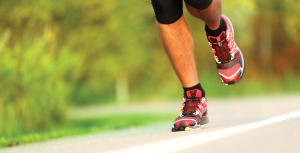An Overview of the RPM2 Preset Exercises to Help You Achieve Bi-Lateral Equivalence
After receiving your RPM2 footbeds, you will then need to perform preset exercises so that our device can monitor  and analyze the data necessary to determine bi-lateral deficiencies. The preset exercises should be performed once a week to measure your progress along the way. As you or your trainer begin to adapt your mechanical movement during your regular workouts, the preset exercises and data collected by RPM2 will help you determine the effectiveness of the changes you are making to your regular regimen. Below is information on the preset exercises along with links to instructional videos to help you understand the process.
and analyze the data necessary to determine bi-lateral deficiencies. The preset exercises should be performed once a week to measure your progress along the way. As you or your trainer begin to adapt your mechanical movement during your regular workouts, the preset exercises and data collected by RPM2 will help you determine the effectiveness of the changes you are making to your regular regimen. Below is information on the preset exercises along with links to instructional videos to help you understand the process.
The Five Preset Exercises for both Runners and Triathletes
Conducting the five exercises listed below with your RPM2 footbeds is how our system collects the data necessary to measure bi-lateral deficiencies. These range of motion exercises are important for determining your starting point and monitoring your progress weekly as you continue using your footbeds with these exercises. When each exercise is complete, the data will be conveniently sent to your mobile device. Performing these exercises correctly is very important to receiving accurate results. To help you execute proper form, each bolded exercise title listed below is linked to its easy-to-follow video tutorial, available on our official YouTube channel.
Ankle dorsiflexion (Seated toe raises)
Next week we will discuss the unique characteristics of the RPM2 system, regarding the measurement of gait analysis to determine cadence, step time, and weight distribution. We will also discuss the additional feature on the RPM2 Triathlete system, which monitors bi-lateral equivalence with cycling. Feel free to subscribe to our blog with your e-mail address to receive the latest news right in your inbox.
Comments (0)
Write a comment
Rating: Bad Good
Enter the code in the box below: